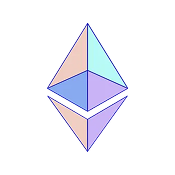Imagine a financial ecosystem where assets can seamlessly move across different blockchains without the need for wrapped tokens or centralized exchanges; this is the core promise of Thorchain. Meanwhile, Ethereum has established itself as the foundational layer for decentralized applications, smart contracts, and a thriving DeFi ecosystem, constantly evolving through upgrades like sharding and layer 2 solutions. Both platforms aim to revolutionize how we interact with digital assets, but they do so from fundamentally different angles—one focusing on cross-chain liquidity, the other on smart contract versatility. This comparison dives deep into their architectural designs, use cases, and future potentials to help investors and enthusiasts understand which suits their needs best.
Short on time? Jump to Thorchain vs Ethereum Comparison
Understanding Thorchain and Ethereum ?
Thorchain (RUNE) is a specialized Layer-1 blockchain built on the Cosmos SDK, designed explicitly to facilitate cross-chain decentralized exchange (DEX) swaps without relying on wrapped assets. Its unique architecture employs BFT Tendermint consensus and on-chain vaults secured by node bonding, emphasizing direct asset management and liquidity pools that span multiple chains. By leveraging continuous liquidity pools paired with RUNE, Thorchain offers a novel approach to liquidity provisioning, significantly reducing the dependency on centralized exchanges for cross-chain asset swaps.
Ethereum, on the other hand, is the pioneering smart contract platform that has evolved into a global, decentralized computer capable of hosting a vast array of dApps, DeFi protocols, and NFTs. Transitioning from proof-of-work to proof-of-stake with Ethereum 2.0, it has markedly improved energy efficiency and scalability. Its architecture comprises multiple layers, including the consensus layer, data layer, and execution environment—powered by the Ethereum Virtual Machine (EVM)—which enables developers to deploy complex smart contracts that automate financial and social interactions without intermediaries.
While Thorchain aims to solve liquidity fragmentation through its cross-chain liquidity pools and native asset management, Ethereum’s strength lies in its flexibility and developer-friendly environment for building decentralized applications. The two platforms address different core challenges within the blockchain ecosystem—Thorchain focusing on interoperability and liquidity, Ethereum on programmability and ecosystem expansion.
Recent upgrades for both networks reflect their respective ambitions: Thorchain’s V3 upgrade introduces a burn mechanism and smart contract support via CosmWasm, enhancing its economic model and developer capabilities. Ethereum’s continuous layer-2 scaling solutions and sharding aim to tackle network congestion and transaction costs, further solidifying its position as the backbone for DeFi and dApps.
Key Differences Between Thorchain and Ethereum
Primary Functionality
- Thorchain: Thorchain is primarily a cross-chain liquidity hub, enabling seamless swaps between different blockchains without wrapped tokens or intermediaries. Its architecture is optimized for liquidity provision, asset management, and interoperability, making it ideal for users seeking efficient cross-chain trading and yield strategies involving multiple assets.
- Ethereum: Ethereum functions as a programmable smart contract platform that hosts decentralized applications across finance, gaming, NFTs, and more. Its ecosystem is designed for flexibility, enabling developers to create complex, customizable dApps and financial instruments, positioning Ethereum as the foundation for decentralized innovation.
Consensus Mechanism
- Thorchain: Thorchain employs a BFT Tendermint consensus, requiring two-thirds node agreement for transactions. This mechanism ensures security and decentralization while supporting high throughput necessary for liquidity pools and cross-chain swaps.
- Ethereum: Ethereum transitioned to proof-of-stake with Ethereum 2.0, utilizing validators who stake ETH to secure the network. This shift enhances energy efficiency, security, and scalability through sharding and layer-2 integrations, supporting a broad ecosystem of dApps.
Core Architecture
- Thorchain: Built on Cosmos SDK, Thorchain's architecture emphasizes on-chain vaults, liquidity pools, and a unique incentive system that drives cross-chain liquidity. Its architecture is specifically tailored for asset swaps across different blockchains without wrapping.
- Ethereum: Ethereum’s layered architecture includes the consensus layer, execution environment via the EVM, and a thriving developer ecosystem for building dApps. Its modular design supports various scaling solutions, including sharding and rollups, to improve throughput and reduce gas fees.
Tokenomics
- Thorchain: RUNE serves as the native asset for Thorchain, used for liquidity, security, and governance. The recent burn mechanism introduced in V3 aims to create a deflationary model, potentially increasing token scarcity and long-term value.
- Ethereum: ETH is the native currency for Ethereum, used for staking, gas fees, and governance. The recent upgrade introduced EIP-4844, reducing transaction costs and enabling scalable data availability for Layer 2 solutions.
Use Cases
- Thorchain: Thorchain excels in cross-chain swaps, liquidity provision via pools, and yield farming involving multiple assets without wrapping. It is ideal for traders, liquidity providers, and yield farmers seeking cross-chain exposure.
- Ethereum: Ethereum supports a wide array of use cases including DeFi protocols, NFTs, DAOs, and enterprise solutions. Its flexibility allows for innovative financial products, automation, and decentralized governance.
Thorchain vs Ethereum Comparison
| Feature | ✅ Thorchain | ✅ Ethereum |
|---|---|---|
| Primary Function | Cross-chain liquidity hub with native asset management | Smart contract platform for dApps and DeFi |
| Consensus Mechanism | BFT Tendermint with node bonding | Proof-of-Stake (PoS) with validators |
| Architecture Focus | On-chain vaults and liquidity pools | Layered architecture with EVM and sharding |
| Native Token | RUNE, with burn mechanisms and liquidity incentives | ETH, used for staking, gas, and governance |
| Main Use Cases | Cross-chain swaps, yield farming, liquidity pools | DeFi apps, NFTs, smart contracts, Layer 2 scaling |
Ideal For
Choose Thorchain: Ideal for traders, liquidity providers, and developers focused on cross-chain interoperability and liquidity solutions.
Choose Ethereum: Best suited for developers, DeFi enthusiasts, and enterprises building decentralized applications and financial protocols.
Conclusion: Thorchain vs Ethereum
Thorchain and Ethereum exemplify different yet complementary pathways in the blockchain evolution—one emphasizing seamless cross-chain asset exchange, the other pioneering decentralized programmability. Thorchain’s architecture is tailored to solving liquidity fragmentation issues across multiple chains, with recent upgrades enhancing its economic model and developer capabilities through smart contract support.
Ethereum’s comprehensive ecosystem, driven by its smart contract platform and Layer 2 scalability solutions, continues to expand its influence across DeFi, NFTs, and enterprise applications. Its transition to proof-of-stake and ongoing sharding developments aim to address scalability and sustainability challenges, ensuring its relevance for the future of decentralized finance and beyond.






